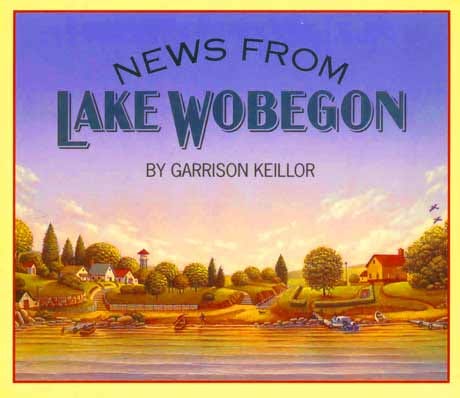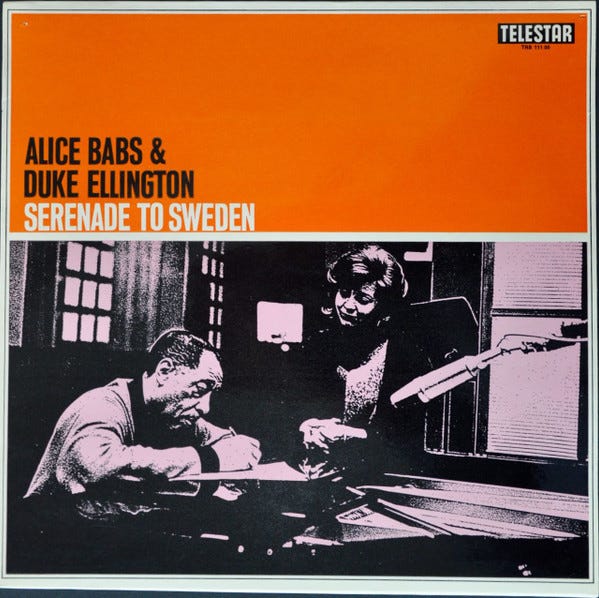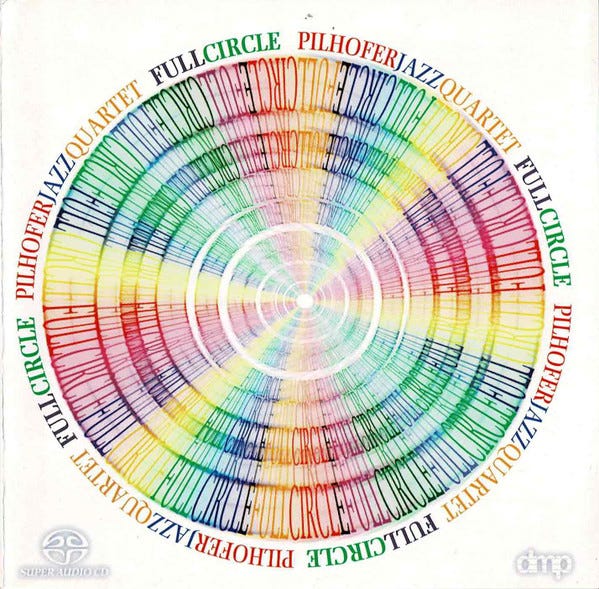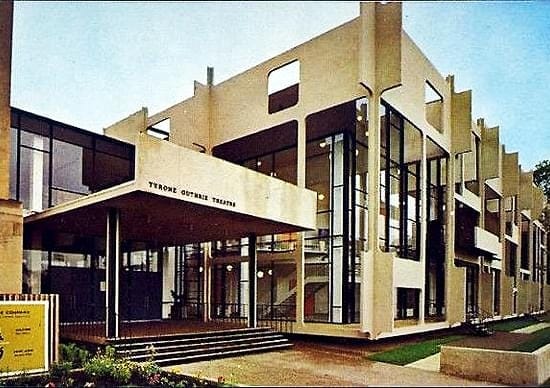Here we are in pursuit of a timber wolf howling across Miller’s Bay, Leach Lake; and we are headed to Star Route, Walker, Minnesota zip code 56484. And up and beyond to Keweenaw Bay, Lake Medora, Houghton and Hancock, Chassell, points north, south, east, and west. Stay tuned here, The Jazz Image recording the life and times of the musicians who make jazz the greatest American art form.
-Leigh Kamman from The Jazz Image, MPR on February 22, 1986
Minnesota is known as the Land of 10,000 lakes. As a kid in high school, I became aware of two more through MPR (Minnesota Public Radio): Lake Wobegon and Lake Hammond.
The more well-known of the two is Lake Wobegon, a fictional town used in Garrison Keillor’s radio program A Prairie Home Companion as the setting for "News from Lake Wobegon".
A Prairie Home Companion was broadcast on MPR from St Paul from 1974 to 2016. It was heard on 690 public radio stations in the United States at its peak in spring 2015 and reached an audience of four million U.S. listeners each week.
The lesser-known Lake Hammond I’d hear Friday nights on the car radio, while driving home from my girlfriend’s house on Lake De Montreville, about 15 minutes from my house in White Bear Lake (two more of those 10,000 lakes). After returning home, I’d often sit in the car in the driveway, listening to Lake Hammond’s jazz journey.
This recording is from 1986, but the voice sounds the same as when I was sitting in my car in the late 1970s:
Many years later, I suddenly learned that Lake Hammond was in fact Leigh Kamman, who for over thirty years from 1973 to 2007 hosted The Jazz Image on MPR.
This week on that Big River called Jazz we’ll explore the world of Leigh Kamman.
Leigh Kamman was born in Minnesota in 1922. He met jazz as an 11-year-old working a summer job at a lake resort in central Minnesota. The owners played old 78rpms, and he’d fall asleep hearing Duke Ellington.
As a junior in high school in St. Paul, he met and interviewed Ellington at the St. Paul train station. He published the interview in his school newspaper. While still in high school, he hosted his first jazz radio show on WMIN. In 1942, he moved to WBEC in Duluth, hosting Symphony in Riffs from a nightclub called The Flame, where he met and became friends with Oscar Pettiford.
Kamman went on to host jazz radio programs for the U. S. Army’s Armed Forces Network on KOA in Denver. After the war, he returned to Minnesota broadcasting on WLOL. In 1950, he moved to New York City broadcasting live on WOV from the Palm Café, the self-proclaimed “Most Modern Café and Cocktail Lounge in Harlem” just down the street from the Apollo Theater. In 1956, he returned to WLOL in Minnesota and later joined KSTP. In 1973, he moved to MPR and started The Jazz Image, where I heard his voice for the first time, thinking I was hearing Lake Hammond.
While reading about Minnesotan Oscar Pettiford, I first realized Lake Hammond’s true identity. This 1941 photo at the University of Minnesota was my first clue:
That’s Kamman kneeling in the front right with the long microphone. Oscar Pettiford is on bass in the top right. I recognized Kamman from Pettiford’s song Kamman A’Comin’, from Pettiford’s self-title 1955 album on Bethlehem Records. I went online to learn about the connection between Pettiford and Kamman and ran across this wonderful 5-minute clip: The Jazz Image Special Edition: Oscar Pettiford. Listening to that short clip gives us some insight into Kamman’s Jazz Image.
After a short musical introduction, Kamman begins to speak with the music playing in the background:
From the land of the midnight sun. The sound of Alice Babs. Welcome to this special edition of The Jazz Image. This is Leigh Kamman with a sampling of memories and conversations from 60 years of Jazz broadcasting.
The music he is speaking over is Stoona by Alice Babs and Duke Ellington:
Then Kamman plays a snippet from Oscar Pettiford’s Stardust:
Kamman continues:
That’s a classic jazz piece featuring Oscar Pettiford. I first met Oscar Pettiford in Minneapolis, Minnesota on occasions where Oscar would be playing his bass, sometimes his cello. Oscar Pettiford graduated from an imposing musical family: Ira Pettiford, Harry Pettiford. The father and mother were the guiding light of the Pettiford organization, but New York City, you know, really developed Pettiford’s status.
He then jumps right into the taped 1952 Pettiford telephone conversation.
Then, it’s back to more Stoona….
After hearing that clip the light bulb went on. That was the voice I’d heard back in high school, and that’s when I realized Lake Hammond was Leigh Kamman.
To open his Jazz Image programs and to transition between hours, Kamman featured a few songs like Django Reinhardt’s Manoir De Mes Reves (Aka 'Django's Castle') played by Gerry Mulligan and his Concert Jazz Band:
However, the song he used the most was Stoona by Alice Babs and Duke Ellington.
Alice Babs was a renowned Swedish singer and actress. She developed a long and productive collaboration with Duke Ellington that began in 1963 when Ellington called her in Sweden asking her to come to Paris to record with him. She agreed and they met at Studio Hoche in Paris to record the wonderful Serenade To Sweden.
In 1968, Babs performed for the first time with the Ellington Orchestra to record Ellington’s Second Sacred Concert at the Cathedral of St. John the Divine in New York City. She also performed in Ellington’s Third Sacred Concert, which premiered at Westminster Abbey in London on October 24, 1973.
In the 2000s, for transition songs on the hour, Kamman added Full Circle by the Pilhofer Jazz Quartet, a more contemporary and local jazz group:
The group was led by Herb Pilhofer, a native German who came to Minneapolis in 1954. From 1955 to 1961 he led groups that performed in the courtyard behind the original Walker Art Center:
In 1963, Pilhofer became the musical director at the newly opened Guthrie Theater, designed by Ralph Rapson. This is the Guthrie at the original location before it was moved down by the river.
Interestingly, in 1967, when the North Stars moved to town Pilhofer and Dick Wilson composed the team song “Go For a Goal, North Stars”:
Dig Cesare Maniago’s mask - pretty funny stuff.
In 1969, after working at the legendary Kay Bank Recording Studio, Tom Jung and Herb Pilhofer founded Sound 80 Studios, named by Brad Morrison, the same ad man who had previously christened Hormel’s ham Cure 81.
Sound 80 was initially located on the campus of a business called Empire Photosound at 4444 W. 76th Street in Edina. Empire Photosound was a filmmaking company that Sound 80 worked with from time to time. In the summer of 1970, Sound 80 began to build a new studio and on March 9, 1971, the Minneapolis Star announced that Sound 80 had moved into its new building at 2709 25th St. East in Minneapolis:
Even though in December 1974 Bob Dylan and a group of young Minneapolis musicians re-recorded half of his Blood on the Tracks album there and in 1977 Prince cut the demos for his first album For You there too, I’m not sure Sound 80 ever rocked harder than when the Lamont Cranston Band recorded their first three albums there. From their first in 1976, here is the classic Upper Mississippi Shakedown with the mint WLOL intro and the master Pat Hayes on harmonica:
Here’s Pilhofer at work at Sound 80 Studios:
In 2001, Pilhofer returned to the studio with his new quartet to record Full Circle, which takes us full circle to the title track and a Kamman favorite:
Here are two more for the road. Let’s just let “Lake Hammond” do the talking, and listen to a couple of his wonderful and extremely informative Jazz Image programs. The first his Duke Ellington Tribute that aired in April 1987 - note Mulligan’s Django's Castle intro:
And the second his Count Basie Tribute that aired in August 1993:
In some ways, Kamman’s journey is similar to mine. He was not a trained musician and did not read music, he just loved jazz and did what he could to share that love and enthusiasm. He didn’t just spin records. He told a story and painted a picture with his words.
Leigh Kamman was not one of Minnesota’s 10,000 lakes, he was one of a kind. A pioneer, who for six decades exposed that Big River called Jazz to the general radio audience. Leigh Kamman's legacy includes hundreds of historic interviews with musicians and thousands of hours of sophisticated and elegant radio programming. The Leigh Kamman Legacy Project has already made many of these archives available for streaming from this website, and they have plans for many more. Donations will assist in this effort.
On September 29, 2007, Kamman hosted his last edition of The Jazz Image. On Friday, October 17, 2014, Leigh Kamman passed away. He was 92 years old. I’ll leave you with his words: “You and I have had a journey. My name is Leigh Kamman. Away we go. Have a good weekend - what’s left of it.”
Next week, on that Big River called Jazz, we’ll dig in our paddles to explore the world of Herbie Hancock.
If you like so far what you’ve been reading and hearing on our journey and would like to share this with someone you think might be interested in learning more about our great American art form: Jazz, just hit the “Share” button.
From Astaire to Sun Ra: A Jazz Journey is a reader-supported publication. If you feel inclined, subscribe to my journey by hitting the “Subscribe now” button.
Feel free to contact me at any time to talk shop. I welcome and encourage that.
Please hit this link to buy me a cup of coffee, if you’d like to show your guide some appreciation for this and past journeys. Know in advance that I thank you for your kindness and support.
Until then, keep on walking….













